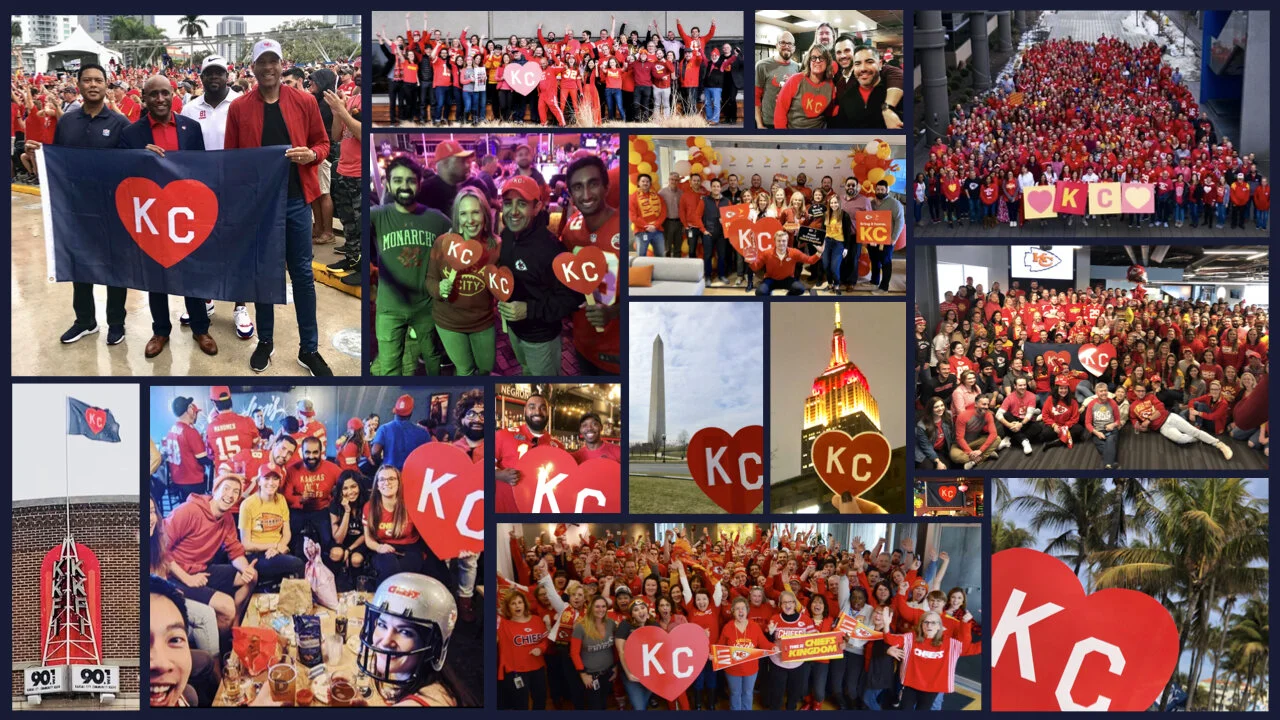Image courtesy of Occidental Management
COVID-19 business survey results optimistic
A December 2020 survey of area businesses shows that respondents are feeling more optimistic about the future of their companies.
A total of 236 businesses and nonprofits responded to the survey, conducted by the Greater Kansas City Area Chamber of Commerce, Kansas City Area Development Council, KCSourceLink, the Black Chamber of Commerce of Greater Kansas City, the Mid-America LGBT Chamber and Visit KC.
Sixty-four percent of those surveyed are “very confident” their business will fully recover from the pandemic and related economic downturn; 31 percent were “somewhat confident;” four percent were “not very confident;” and one percent said they were “not at all confident.”
“We see that passion, perseverance and tenacity in these survey results as well as in the number of people who are looking to start businesses during this pandemic. These business owners need our support now and in the future so they can continue to solve problems, bridge the wealth gap, fuel our local economy and build their own resiliency," said Maria Meyers, executive director of the UMKC Innovation Center and founder of SourceLink.
In terms of revenue since March 2020, 20 percent said they’ve seen revenues decrease more than 50 percent; 37.83 percent reported a revenue decrease of 50 percent or less; while 33.48 percent saw their revenues stay the same or increase. A total of 31.74 percent say they’ve laid off employees. Of their biggest concerns going forward, the largest response – 29.13 percent – said they were concerned about losing sales.
A majority of those responding said the pandemic has had some positive effect in the way they do business, including development of new e-commerce options and increases in online sales. Others noted that pivoting their business as a result of the pandemic has forced them to “think outside the box more,” or has accelerated their future business direction.
Responses were mixed regarding business travel once a vaccine is readily available. A total of 47.3 percent said the impact would be small, with some amount of reduced travel; 27.49 percent predicted no impact, though they weren’t traveling yet; while 20.47 percent said there would be a large impact on their business travel, expecting their role to no longer require/allow as much travel in the longterm.
On the subject of vaccines, 26 percent of respondents said they planned to require employees to be vaccinated before returning to the workplace.
Placemaking in a post-COVID world
As we wrap up the final weeks of 2020, I’m optimistic for the year ahead. Undoubtedly, COVID has disrupted the world, but the regions that continue to adapt and make the best of tough circumstances will see long-term success.
The Kansas City region is at a pivotal moment, and in 2021 it’s our opportunity to rise to the occasion. The impact of COVID hit big cities hard, serving as the push that many needed to say goodbye to sky-high costs and densely-packed living arrangements. When you can work from anywhere, why not somewhere that offers the same big-city amenities and more room to roam?
As companies evaluate office spaces, reprioritize benefits and continue to offer remote work options post-pandemic, traditional talent recruitment strategies will further morph into something new.
It’s no surprise that remote work has changed the placemaking game. In fact, due to the urban exodus, Kansas City has seen a 3.9% population inflow compared to last year during the same time period (April - August 2020).
What makes KC so attractive? You don’t have to think too hard to understand why we’re seeing an uptick of individuals from across the U.S. making their way to our region. KC Heartland offers high quality of life at a fraction of the hassle or cost. Not to mention, we’re consistently ranked as a top place to live and work. Check out a few of this year’s most relevant accolades:
No. 1 Best City for Remote Workers, Business Insider, March 2020
Great American City for Creatives, Thrillist, May 2020
Best Business Climate, Business Facilities, August 2020
These rankings, along with many others, help tell our region’s story. Moving forward, talent will care less about shallow work perks and more about what really matters, work/life integration. In a society where priorities have had to shift to accommodate the demands of employees’ personal and professional lives, regions that proactively elevate their diverse mix of lifestyle amenities, showcase the individuals who call their community home, and highlight the abundance of job opportunities will outpace their peers.
The growth and development of our region over the last several years has set the stage for KC to step up big in 2021. The KC Heartland campaign has been hard at work the past 12 months showcasing the best of our region to the world, and we’re looking forward to taking its efforts to the next level in 2021.
KC Heartland will continue to introduce or reintroduce the Kansas City region to individuals, and now also proactively share key content to help drive someone’s decision to relocate personally or for business.
At KCADC, we continue to add engaging content to our talent attraction toolkit. Our most recent sizzle video is all about making the choice to live and work in KC and our annual publication, KC Options magazine has readership in more than 80 countries.
Want to learn more or even help share the love? You can sign up to be a KC Heartland Ambassador to start spreading the KC message to your own networks. Selling our region is a team sport, after all.
Tim Cowden is the president and CEO of the Kansas City Area Development Council (KCADC). The organization serves the 18-county, two-state Kansas City area by marketing the region's business and lifestyle assets to companies around the world. Working closely with its two states, and 50-plus county and community partners, the region has attracted more than 60,000 new jobs over its 40-year history. KCADC also leads the efforts behind the KC Animal Health Corridor, KC SmartPort and TeamKC. | thinkKC.com
KC Heartland is spreading the love, you can too
Green light for Blue River Commerce Center at former Bannister Federal Complex
The first of seven modern warehouse and industrial buildings is slated to begin this month at the former Bannister Federal Complex, once the site of a massive World War II airplane engine plant and later as the manufacturing hub for America’s nuclear security program.
Bannister Transformation & Development LLC (BTD) made the announcement yesterday (Oct. 22) at the 225-acre site in the heart of south Kansas City along with Missouri Gov. Mike Parson, Sen. Roy Blunt and U.S. Rep. Emanuel Cleaver.
BTD is the private owner and also managed the three-year demolition and clean-up project in preparation of the $135 million redevelopment plan. When complete, the fully-restored property, located at Bannister Road and Troost Avenue, is expected to create more than 1,500 permanent jobs and new economic vitality for the surrounding community.
NorthPoint Development plans to construct a modern industrial park - named Blue River Commerce Center - with 2.6 million SF of new buildings, including a logistics and supply-chain career training center for local job seekers.
“This project is a great example of what can happen when federal and state government work together with private industry. The transformation of this dormant property into a hub of activity will benefit Missouri and south Kansas City for decades to come through new jobs, economic development, and increased commerce and revenue," Gov. Parson said.
The disposition of the site was a collaborative effort between federal and state agencies and private development to guarantee the property would be redeveloped, contribute to the economic resurgence of South Kansas City and save taxpayer dollars.
“This project is transforming an historic site into a modernized manufacturing and distribution hub, which will support new permanent jobs and encourage additional economic development in the Kansas City region. I appreciate the great work Bannister Transformation & Development, and all of their dedicated employees, have done to reach this point. I was proud to support this project and I will continue working with local, state, and federal officials as the redevelopment moves forward,” Blunt said.
A fixture of the economic landscape of South Kansas City since 1942, the obsolete and contaminated former federal manufacturing plant was shuttered more than five years ago when NNSA and the General Services Administration relocated to new facilities. Local and state officials worried that the abandoned site would quickly become blighted and dangerous. But steady community pressure, and leadership from key federal and state stakeholders and the private sector led to a comprehensive plan to raze the more than 3.7 million SF of old buildings and clean up the environmental problems that had accumulated over the long history of the former manufacturing plant.
“This modern industrial complex will eventually yield over 1,500 new jobs. And, for me, that kind of job creation is not just encouraging as I look to the future of our city – it’s also personal. It was at that former plant where I got my first job after moving to Kansas City back in 1968. It is my hope that we can not only continue to grow and transform this vital area of the city, but also that young professionals and future leaders across our community can plant those same roots that have allowed me to make this remarkable place my home for over 50 years,” Cleaver said.
In addition to BTD, the private companies that participated in the demolition and environmental clean-up project include national engineering firm, Olsson Inc.; locally-based construction companies Superior Bowen and Kissick Construction; the Maryland-based environmental firm of S.S. Papadopulos & Associates; and the Chicago demolition firm of Brandenburg Industrial Services.
More than $300 million of new capital investment and several hundred new construction jobs will be generated during the rebuilding period.







